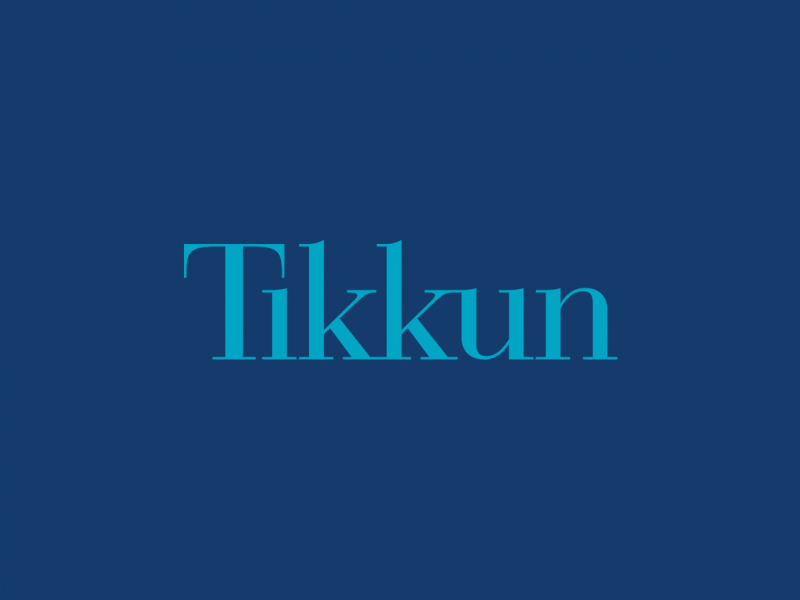How would Heschel himself expect us to understand him—as a poet, as a philosopher, or as a prophet?
Articles
American Jews and Our non-Jewish Allies Should Rally in Support of the Nuclear Deal With Iran (Don’t let past traumas contribute to our inability to see the looming possibility of a more peaceful world)
|
We in the liberal and progressive wing of the Jewish world must loudly and publicly congratulate the negotiators who achieved a deal that will prevent Iran from developing the capacity to build nuclear weapons in the coming years, an agreement that also promises an end to economic sanctions. We are glad that adequate inspections and safeguards are part of this deal—no one would have trusted it otherwise. While Republicans rushed to denounce the deal, their response has been predictable and hollow, given their consistent policy of opposing anything that might give President Obama the appearance of having done something valuable. Their primary claim to credibility comes from identifying with Israeli Prime Minister Benjamin Netanyahu, who immediately decried the agreement as “a historical mistake.” The right wing of the Jewish world is already organizing to oppose the nuclear deal, with the aid of a handful of billionaires who will fund a steady and public barrage of opposition. That is why it is important for Jewish liberals and progressives to speak as Jews to counter the right-wing assault.
We at Tikkun hope to see the day when Iran’s oppressive and human-rights–violating government and mullah regime are non-violently overthrown by democratic means and replaced with a government that no longer limits free speech, ends its oppression of women and Baha’i or other minority religions, and offers a path to peace and reconciliation with Israel.
Editorials & Actions
Shavuot reflections plus Arthur Waskow on Commemorating Memorial Day
|
Shavuot wisdom from Arthur Waskow:
read, Sinai, & Speaking in Tongues:
Ten Notes on Celebrating Shavuot
Dear friends, Shavuot, the “Festival of Weeks,” comes this year from Saturday night May 23 through Monday eveningMay 25. Its name refers to the “super-week” of seven weeks after Passover plus one day — 7 x 7 + 1= 50), when the 50th day becomes the holy day of late spring )
Here are ten steps into understanding Shavuot (and its Christian offshoot, Pentecost):
1. The Torah describes a festival that celebrates the fulfillment of the spring wheat harvest by offering at the Temple two loaves of leavened bread and the First Fruits of the farmers’ work and the land’s abundance. This ancient understanding invites us to renew our connection with the Earth as a sacred connection with YyyyHhhhWwwwHhhh, the Interbreath of life that connects all life upon this planet. 2. The text of Torah never gives any precise date for the Revelation of Torah on Mount Sinai. The early Rabbis, bereft of the Land and strongly desiring that all future generations be able to experience the Torah in much the same way Passover made it possible for all future generations to experience the Exodus, interpreted Torah timing to make the biblical Festival of First Fruits into a festival of Torah. Some Rabbinic interpretations of the Torah text then defined Revelation in radically open ways.
Articles
Promises to Keep
|
Ultimately, the novel raises many issues of immediate relevance to Jews today—the struggle to find oneself on the ever-widening spectrum of Jewish identities, the complex ways that “Jewish values” can be realized in the world, the impact of intermarriage on Jewish continuity, and the tension between personal desire and responsibility to one’s people.
Books
Kickstarter Judaism: A Book Review of Celebrating Brit Shalom
|
Welcome to Kickstarter Judaism, where committed, textually savvy Jews make an end-run around the institutions that have failed them and take back their tradition.
Politics & Society
Spaces and Places: Israel’s Homeland Narrative
|
The conception of Yahweh as placeless reflects the Jewish sense of identity as essentially homeless. But the homelessness of the Jewish deity is in no way a defect — the Jewish concept of the divine represents a radical intellectual advance.
Editorials & Actions
Spend a weekend with Rabbi Lerner and Cat Zavis at ESALEN in Big Sur, California
|
Come spend a weekend with me (Rabbi Michael Lerner) and Cat Zavis June 12-14 (with a very small group of people). Cat and I will have just gotten married and will be celebrating our honeymoon at Esalen, in part by leading a workshop on The Jewish Path to Liberation and Transformation–NOT JUST FOR JEWS. (Please read the description of the workshop we will be offering–below). I wish it could be for free, but since it is at one of the most beautiful places in the world, Big Sur, Ca. (which is where the Esalen Institute has its campus) it’s worth the trip (even from abroad or from the East Coast) and the cost.
2015
Why I Preach from the Hebrew Bible
|
Jesus was a Jew, so Jesus’s Bible was the Hebrew Bible. Churchgoers are missing out if they never encounter more than the Psalms.
2015
Prayer as if the Earth Really Matters
|
Climate prayer is powerful. Here’s how synagogues can breathe earth awareness into services and activists can make their actions prayerful.
Editorials & Actions
“Let the Palestinian People Go”: What Younger Jews Will Be Asking of Israel at Passover Seder This Year
|
What makes this year’s Passover Seders unlike any others is that a majority of American Jews have been forced to face the fact that Palestinians today are asking Jews what Moses asked Pharaoh: “Let my people go.” The Israeli elections, and subsequent support for Prime Minister Netanyahu’s open racism and obstinate refusal to help create a Palestinian state, is not playing well with many younger Jews, and they will be challenging their elders to rethink their blind support for Israeli policies.
Articles
Esther Was Vegan Too: On Purim, Let’s Renew Our Struggle to End Factory Farming
|
From saving water, to helping animals, to decreasing our carbon footprint, the single most effective change we can make is to eat a more plant-based diet. Just as Esther took action to save the Jews, so we can take action to save animals and our planet from extermination.
Editorials & Actions
Revenge–the Unconscious Subtext of the Scroll of Purim by Michael Kagan, Jerusalem
|
Revenge – the Unscrolling of Purim
MICHAEL KAGAN
February 24, 2015, (reprinted with permission from The Times of Israel)
Michael Kagan
Michael Kagan is the author of the Holistic Haggadah (Urim), God’s Prayer (Albion-Andalus) and The King’s Messenger (Albion-Andalus Books)… [More]
What you’re about to read does not make pleasant reading. It defies the usual acceptance of Purim as the forces of good overcoming the forces of evil, of us against them, of the imminent destruction of the innocent by the wicked. It may appear that what I am about to describe comes from a desire to ruin the Purim spirit in a similar way that post-modern accounts of the Zionist endeavor have undermined the stories that we have grown up with. But my exploration is motivated by three simple questions that arose while listening to the recitation of the Megillah; questions that I had never asked before; questions that arise from the p’shat (literal) meaning of the text; questions that do not rely on imaginative midrash to answer; questions that bother me. Here they are:
Why does Mordechai refuse to bow down to Haman?
Analysis of Israel/Palestine
Bringing the Values of Open Hillel Into Postgraduate Life: An Open Letter
|
Where will all the Open Hillelnikim go once they’ve left campus? What will become of this movement? How will you engage the Jewish community beyond campus? In short, how will you engage with the Israeli-Palestinian conflict as an American Jew?
Articles
Before Mondoweiss: Jewish Anti-Nationalism in the Wake of the Holocaust
|
Once upon a time, Hillel chapters across the country distributed an adamantly anti-Zionist newsletter that could well be described as the Mondoweiss of its day. Yet during the years in which the newsletter ran, Israel was gradually finding its place center-stage for Jews worldwide—a nightmare come true for the anti-Zionist camp.


